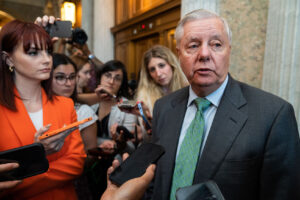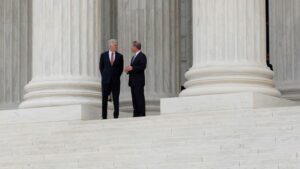
The Congressional Budget Office (CBO) has projected that President Donald Trump’s latest tax cut and spending bill could add a staggering $3.4 trillion to the federal deficit over the next decade. This development has sparked concern among economists who argue that the increase in deficit could place the U.S. economy on a precarious path.
President Trump, speaking at a rally at the Iowa State Fairgrounds in Des Moines on July 3, 2025, defended the bill, claiming that it would usher in a new era of economic prosperity. However, fiscal experts warn that the bill’s implications could be dire, given the already high levels of national debt.
Economic Concerns Over Rising Debt
For years, fiscal hawks have cautioned against the dangers of escalating U.S. debt. However, economists now argue that the situation is more critical than ever. Kent Smetters, a professor of economics and public policy at the University of Pennsylvania Wharton, likened the situation to a house on fire, stating, “It’s like the house is burning down and we’re throwing in some accelerant instead of some fire extinguisher.”
Smetters emphasized that the U.S. was already on an “exploding debt path” even before the introduction of this bill, suggesting that without significant reforms, the country could face severe consequences within two decades.
“If we don’t, the ramifications are pretty serious. Bond markets can be really, really disciplinary,” Smetters said.
Disputing the Economic Forecast
At the heart of the debate is the CBO’s projection of increased deficits, which the White House disputes. President Trump has argued that economic growth and tariff revenues would offset the bill’s costs, envisioning a “Golden Age of America.”
“Our country is going to explode with massive growth … This bill sets us on course for enormous prosperity,” Trump wrote on social media.
However, many economists remain skeptical. They highlight that the bill is one of the most expensive in recent history and could significantly reduce tax revenue for years to come. The federal debt is already at record levels, equivalent to the entire U.S. economy, with about one in every four dollars of personal income taxes going towards interest on the national debt.
Potential Economic Implications
Experts caution that larger federal deficits could lead to higher interest rates, making mortgages and car loans more expensive and potentially crowding out business investments. Douglas Elmendorf, a professor at Harvard Kennedy School, explained the potential risks:
“It’s like a family that taps out its credit cards and then has a problem with the roof of their house. You want to have a little room to maneuver in case bad things happen, and we are running out of that room,” Elmendorf said.
The U.S. has previously managed crises like the 2008 financial meltdown and the COVID-19 pandemic through substantial federal spending. However, the persistent high debt levels mean fewer options are available for future crises.
The Risk of a “Doom Loop”
The U.S. has long been the gold standard in global finance, benefiting from strong demand for its debt. Yet, recent jitters in bond markets have raised concerns about the sustainability of this demand. Economists fear that a loss of confidence could trigger a “doom loop,” where rising debt leads to higher interest rates, further inflating the debt and making it harder to manage.
“This bill will make interest rates higher and makes the risks of falling into a doom loop higher than it would be otherwise,” Elmendorf warned.
If such a scenario unfolds, the U.S. could face painful austerity measures, including cuts to federal benefit programs like Social Security and Medicaid and significant tax increases.
“If we fall into a doom loop, then the U.S. has to make dramatic cutbacks in federal benefit programs… That will be really bad for people’s standard of living. That’s why it’s important to take moderate actions before that happens,” Elmendorf added.
The debate over the bill continues as lawmakers and economists grapple with the potential long-term impacts on the nation’s fiscal health. The coming months will be crucial in determining whether the U.S. can navigate these challenges without resorting to drastic measures.






